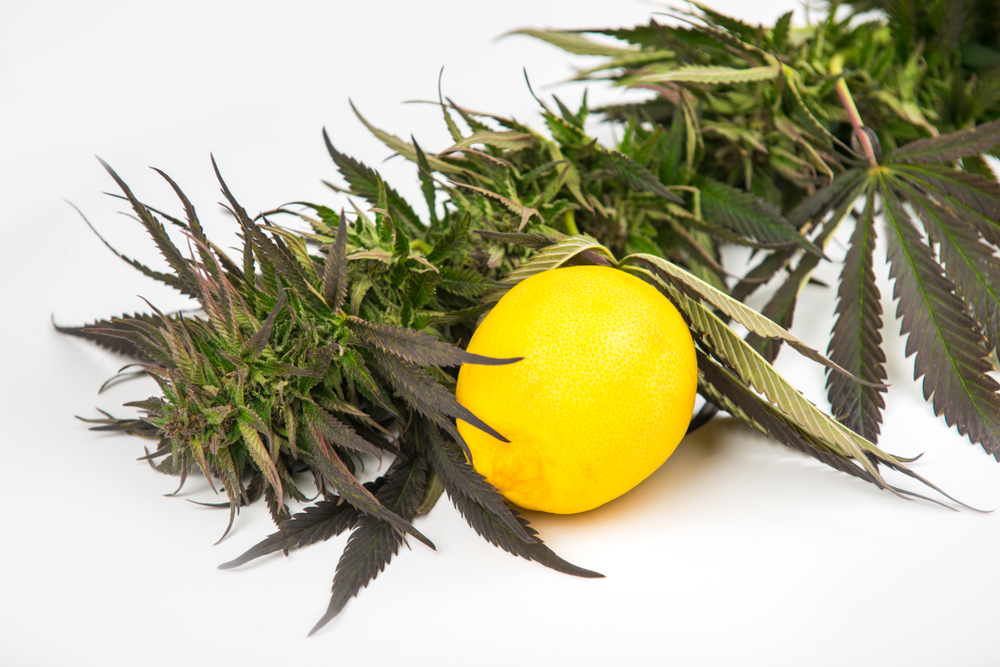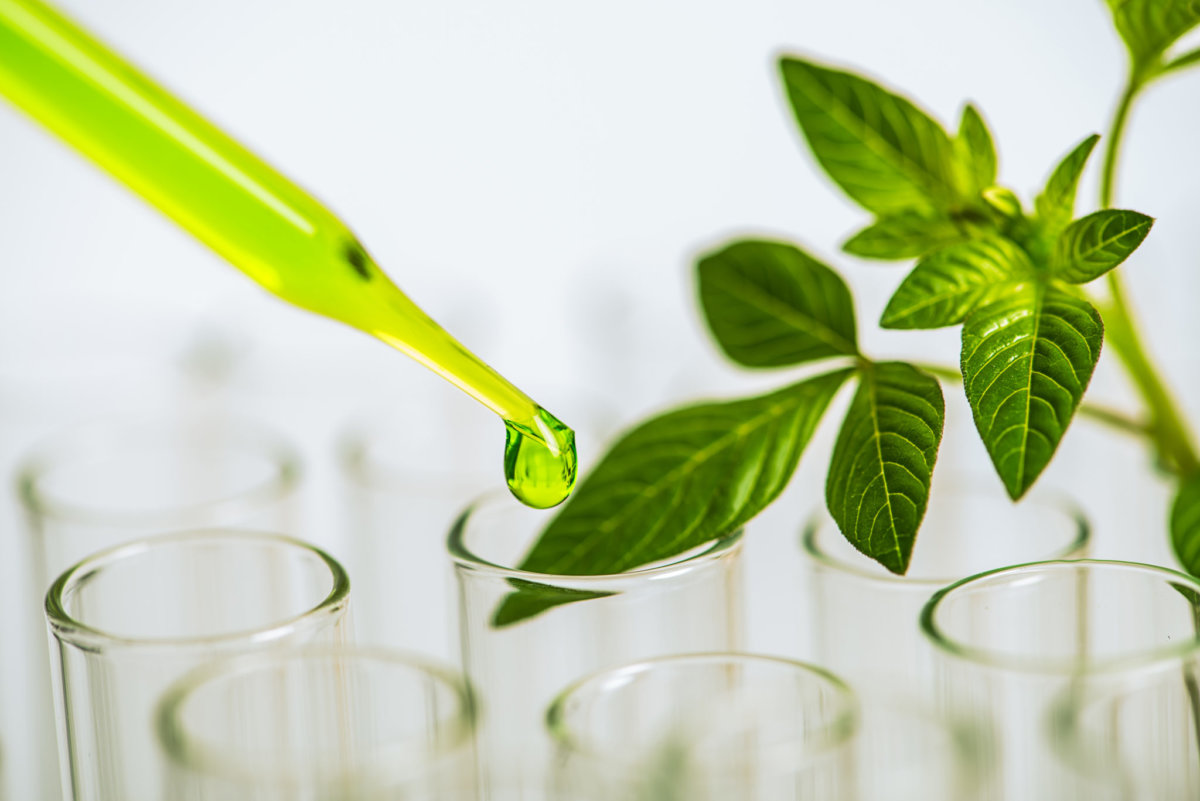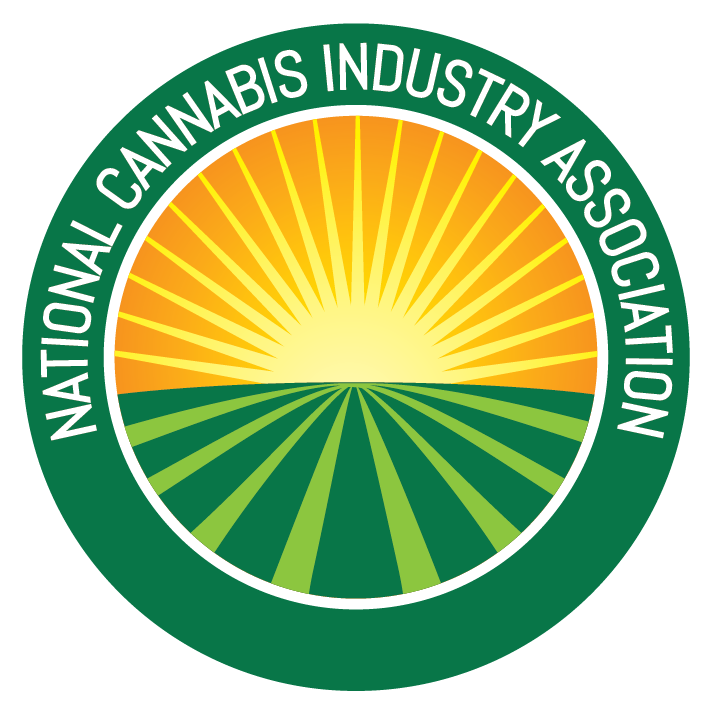Member Blog: GRAS Cannabinoids

Brad Douglass, Ph.D., EAS Consulting Group Independent Consultant
The Agricultural Improvement Act of 2018 (the “2018 Farm Bill”) helped to further define the pathway by which “hemp-derived” ingredients can be legally incorporated into food. Since then, hemp-ingredient companies have materialized selling purified cannabinoids that are found naturally-occurring in hemp. Despite the young market, these companies are facing difficult times as the buyers for these ingredients are few and manufacturers mostly compete on price. The GRAS path offers a route out of this conundrum.
What is GRAS?
The Generally Recognized as Safe (GRAS) for food-use pathway was established by the 1958 Food Additives Amendment to the Federal Food, Drug, and Cosmetic Act (FD&C Act). It delineated how substances that are GRAS for their defined conditions of use in food are different from food additives.
Others have previously delved into why firms might consider pursuing GRAS notifications and/or New Dietary Ingredient Notifications (NDIN) independent of hemp and hemp-derived ingredients so I will refrain from wholesale repetition. Two key points on specificity are nonetheless worth repeating: 1) a substance is deemed GRAS for a specific use under specific conditions and 2) a GRAS notification is specific to the company filing the notification.
Why GRAS?
There are a number of practical reasons why firms that produce cannabinoids would seek to pursue the GRAS pathway. Here are five:
Market Expansion
Currently, firms that produce purified hemp cannabinoids are mostly selling their wares to businesses operating in state-regulated delta-9 tetrahydrocannabinol (THC) markets or to operations that may not be in full-compliance with dietary supplement regulations. Almost all firms that produce food products, including beverages, and most dietary supplement manufacturers, will not use ingredients that do not have a history of use in food or that cannot be legally marketed.
For ingredients such as purified hemp cannabinoids that do not have a history of use as articles used for food, the only way to open-up the food, beverage, and dietary supplement markets is via the GRAS/NDIN pathways.
Safety Demonstration
An integral part of any GRAS dossier is the basic demonstration of acceptable risk (cf. safety) for the named substance and impurities. This includes any byproducts that may be introduced by the manufacturing process. Whether one is interested in pursuing a GRAS Notification for submission to FDA or for a self-affirmed GRAS conclusion, the process involves an evaluation of safety for the conditions of use (e.g. serving size, no-observed adverse event level, etc.).
Beyond the ethical necessity of understanding the hazards of a product meant for human consumption, pursuing GRAS helps protect a firm from product liability in the event that harm is created. But more importantly, GRAS helps guard against product liability by seeking to prevent the potential hazard in the first place. That is always good for business.
Avoiding Drug Preemption
FDA has described in numerous forums, including the Administration’s own website, why it has concluded that cannabidiol (CBD) cannot be used as an ingredient in food or dietary supplements. The key is section 201(ff)(3)(B) of the FD&C Act. This section disqualifies an ingredient from use in food or dietary supplement products if the ingredient is 1) an active ingredient in an approved drug or 2) if substantial clinical investigation of the substance as a drug has been conducted AND made public.
While the situation remains unclear for CBD, the only way to avoid a similar murky situation for other cannabinoids (e.g. cannabigerol, CBG) is for those ingredients to be marketed as a food or dietary supplement prior to the public disclosure of clinical trials directed at the development of that substance as a drug.
It is FDA’s position that “legal” marketing entails more than simple inclusion of the substance in marketed products — the substance must have been the subject of GRAS, food-additive, or NDIN pathways, if required, to be legally marketed. To that point, FDA is highly unlikely to conclude that legal marketing includes the marketing of products in state-regulated cannabis systems while THC remains federally illegal.
Side-Stepping Price Wars
The nascent hemp-derived ingredients market is experiencing significant downward price pressure. The reasons are simple. There is currently more supply than demand (see #1 above) and all commercial offerings are essentially generic.
The GRAS pathway is a mechanism out of this me-too trap. A GRAS cannabinoid would be a premium ingredient by virtue of GRAS status alone. Premium ingredients command premium prices. And the types of sophisticated customers that firms like to do business with do not mind paying premium prices for compliance.
Regulatory Intelligence
While we wait on FDA to draft regulations for manufactured hemp-derived products, it is difficult for businesses to make decisions about what products to pursue. Some firms may not care about internal FDA thinking for hemp-related issues like delta-8 THC or proposed New York State in-process hemp material THC limits of 3%, because they are going to seek to exploit the here-and-now.
For forward-looking firms, engaging with FDA through GRAS or other regulated ingredient pathways can help illuminate what lay around the bend. Effectively navigating bends in a fast-paced, regulated marketplace can be the difference between knowing when to brake… and going broke.
How GRAS?
There are a few ways to go about this, but simply asking the question within your company and with your legal and regulatory counsel will help generate more of a groundswell. There are a few hemp- and cannabinoid-specific intricacies that must be navigated in practice, including FDA’s own policies on hemp. But there is no reason why this cannot be done.
EAS Independent Consultant, Brad Douglass, Ph.D., evaluates FDA and FTC compliance of dietary supplement materials including review and audit of dietary supplement labels and labeling. He is experienced in multiple technical, quality, and formulation roles in the dietary supplement and cannabis industries which lends perspective not only regulatory requirements but also the realities of real-world business. Brad’s previous positions include VP of Regulatory Affairs and Director of Advanced Botanical Strategy at the Werc Shop in Los Angeles. He has a doctorate in Organic/Medicinal Chemistry from USC. EAS Consulting Group, a member of the Certified Group of companies, is a global leader in regulatory solutions for industries regulated by FDA, USDA, and other federal and state agencies. Our network of over 150 independent advisors and consultants enables EAS to provide comprehensive consulting, training and auditing services, ensuring proactive regulatory compliance for food, dietary supplements, pharmaceuticals, medical devices, cosmetics, tobacco, hemp and CBD. easconsultinggroup.com
If you represent a firm that creates hemp-derived cannabinoids, are a regulator that has responsibility over products that incorporate non-THC cannabinoids, or are just an interested reader that has been intrigued by this blog post, do not hesitate to reach out to me at bdouglass@easconsultinggroup.com.
Member Blog: Hemp Production, Testing, and the FDA

by Charlotte Peyton, Independent Consultant, EAS Consulting Group
The new U.S. Domestic Hemp Program will approve cultivation plans issued by states and Indian Tribes and can approve plans submitted by producers that live in a state or Tribe where plans are not already submitted and where hemp production is not forbidden. According to the USDA website, 28 states and Puerto Rico and U.S. Virgin Islands have had their hemp plans approved by the USDA, 11 states have plans under review, 5 states have obtained a license from USDA, 5 are electing to continue under the 2014 Hemp Pilot Program, Colorado is resubmitting their plan, Alaska is drafting their plan, and Idaho is awaiting state legislation. What is surprising is that some of the biggest hemp growing states, such as Montana (44,910 acres), Colorado (20,330 acres) and Kentucky (18,910 acres) do not yet have their plans approved by the USDA. Montana is choosing to operate under the 2014 Hemp Pilot Program, Colorado is resubmitting their plan to USDA and Kentucky’s plan is still under review.
While there has been a rush to plant hemp by farmers eager to cultivate a high-priced crop with enormous demand, there has not been the same rush to set up extraction facilities. This is a critical step for the manufacture of cannabidiol (CBD) raw material. Hemp must be dried properly before extraction or it will rot so cultivating a plant that is susceptible to rot without an assigned material manufacturer (extractor) is risky. The impact of the differences between hemp and typical crop cultivation for farmers and the lack of extraction companies has been disastrous for some farmers. Hemp must be monitored for THC levels as the crop grows because any hemp harvested with an amount of THC over 0.3% must be destroyed. This is completely different from soy or cotton cultivation. And when the cost of clones to plant in a large field is included, the potential loss increases dramatically.
Then there are the Food and Drug Administration (FDA) hemp/CBD product issues. While there has been positive movement towards the legal sale of hemp products on the USDA cultivation side, the FDA has authority over foods and dietary supplements, and the FDA’s position is that the addition of hemp/CBD to a food or dietary supplement is “violative.” There is speculation that dietary supplement FDA rules are imminent but until the FDA makes those rules public, sales of finished product is still illegal.
In a Consumer Update statement revised on November 25, 2019 the FDA clearly stated that “it cannot conclude that CBD is generally recognized as safe (GRAS) among qualified experts for its use in human or animal food.” Numerous warning letters have been issued by FDA to CBD manufacturers for disease claims about their products. Whether sold as dietary supplements, conventional foods, cosmetics, animal food, so of the violative disease claims include pain relief, anti-inflammatory, diabetes, acne, anxiety, depression, and cancer. For example, one Warning Letter issued by FDA on November 22, 2019, cites 45 diseases. FDA has stated that CBD in products sold as dietary supplements does not meet the definition of a dietary ingredient in the Federal Food, Drug, and Cosmetic Act (321(ff)(B)(i)(ii)). This provision clarifies that a dietary ingredient cannot be a substance that has been approved as an active ingredient in a drug. FDA has approved CBD as an active pharmaceutical ingredient in the drug Epidiolex. Although the FDA is only taking enforcement action on companies making products that contain disease claims, once the disease claim is made the FDA will cite other regulatory enforcement issues. Companies not making disease claims have not been targeted for enforcement yet. Several states, including New York and Oregon, are following the FDA’s lead by banning some products containing CBD, mostly infused food.
In addition to these challenges, there have been a series of class-action lawsuits filed against hemp/CBD manufacturers. These are based on the fact that the FDA has stated hemp and CBD is illegal in food and dietary supplements. The lawsuits claim the plaintiffs suffered economic loss because the products were not dietary supplements according to the FDA. The 11th Circuit Court of Appeals is allowing the consumer injury requirement necessary to sustain a complaint to be satisfied by the allegation that an FDA product is “illegal.” This ruling may open the floodgates for more class-action lawsuits.
All testing of hemp must be performed by a laboratory with a Drug Enforcement Agency (DEA) license. This is because hemp that does not meet the less than 0.3% tetrahydrocannabinol (THC) does not fall under the industrial hemp definition and is still under the jurisdiction of the DEA. A list of U.S.-based licensed laboratories is available on the DEA website and also on the USDA website. Pesticide screening is one of the tests dictated for hemp in the US Domestic Hemp Program. Ten pesticides have been approved for use on hemp by the Environmental Protection Agency (EPA). The latter is a notable step since the EPA could not do this before the removal of hemp from The Controlled Substances Act. Nine of the allowed pesticides are biopesticides and one is a conventional pesticide.
Then there is the matter of CBD as either a full-spectrum oil vs. an isolate. Unlike marijuana flower which is a very popular product, hemp flower is very rarely sold at the retail level. Full-spectrum oil is extracted from the plant, and depending on the solvent used, produces an oil with the same, or close to the same, naturally occurring chemicals from the plant. The oil, therefore, includes all the cannabinoids present along with any terpenes, lipids, or other compounds present in the plant. Full-spectrum oil is a botanical extract and is a dark thick oil. Isolate is produced by separating the constituents of the full spectrum oil by molecular weights or boiling points to have very pure chemicals in the 95%+ purity range. CBD isolate is a white crystalline substance and bears the greatest resemblance to synthetic raw material and at its purest form cannot be distinguished as coming from a plant in the dirt or a synthesized chemical. Full-spectrum oil bears the greatest resemblance to a botanical dietary supplement. It remains to be seen what the FDA will allow in the future.
I believe in this industry and I am rooting for the pioneers who have taken all the risk thus far, but am concerned about the lack of understanding over FDA’s authority particularly as this industry aims to transition to a regulated future. Most don’t understand FDA’s purview or don’t think it applies to them or their products. When that day comes, bringing the hemp industry into compliance with federal regulations will be challenging.
Hemp pioneers deserve to benefit from their labor and the risk they have taken. For those hemp product companies that do not think compliance is worth the effort or cost, there are many FDA compliant human food, animal food, dietary supplement, pharmaceutical, or cosmetic companies that are waiting to take your business…
 Charlotte Peyton supports EAS Consulting Group hemp, CBD and hemp clients as well as that of dietary supplement and pharmaceuticals. As an independent consultant she assists with projects ranging from startup through manufacturing and support. Her expertise includes quality, regulatory and management, method development and method validation for FDA regulated drug, dietary supplement, and bioanalytical samples. She has extensive experience in writing validation protocols, reports and SOPs and assists with implementation of stability programs and report writing for finished products.
Charlotte Peyton supports EAS Consulting Group hemp, CBD and hemp clients as well as that of dietary supplement and pharmaceuticals. As an independent consultant she assists with projects ranging from startup through manufacturing and support. Her expertise includes quality, regulatory and management, method development and method validation for FDA regulated drug, dietary supplement, and bioanalytical samples. She has extensive experience in writing validation protocols, reports and SOPs and assists with implementation of stability programs and report writing for finished products.
EAS Consulting Group, a member of the Certified family of companies, is a global leader in regulatory solutions for industries regulated by FDA, USDA, and other federal and state agencies. Our network of over 150 independent advisors and consultants enables EAS to provide comprehensive consulting, training and auditing services, ensuring proactive regulatory compliance for food, dietary supplements, pharmaceuticals, medical devices, cosmetics, tobacco, hemp and CBD. www.easconsultinggroup.com



 Charlotte Peyton supports
Charlotte Peyton supports